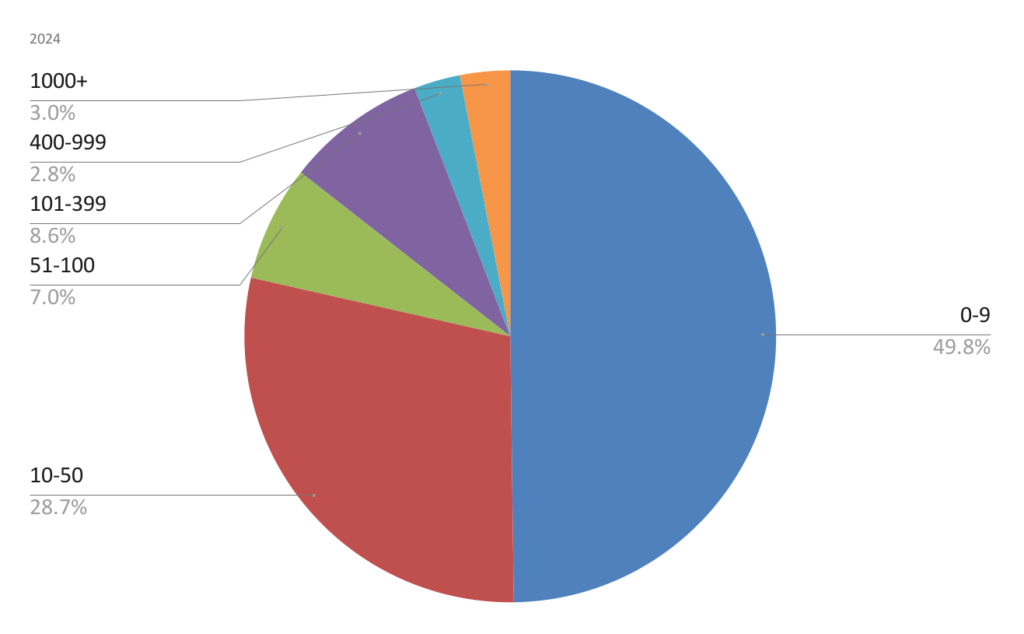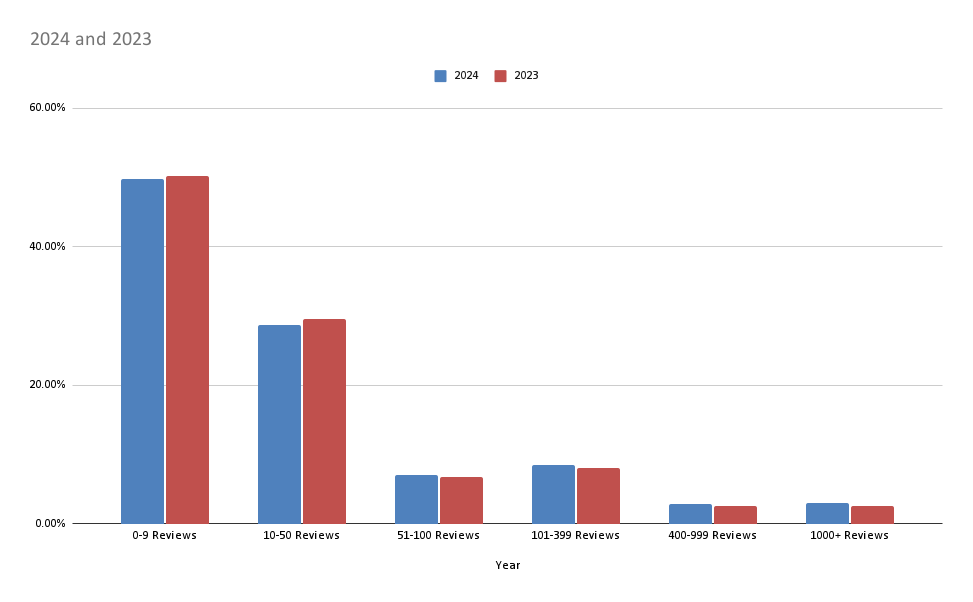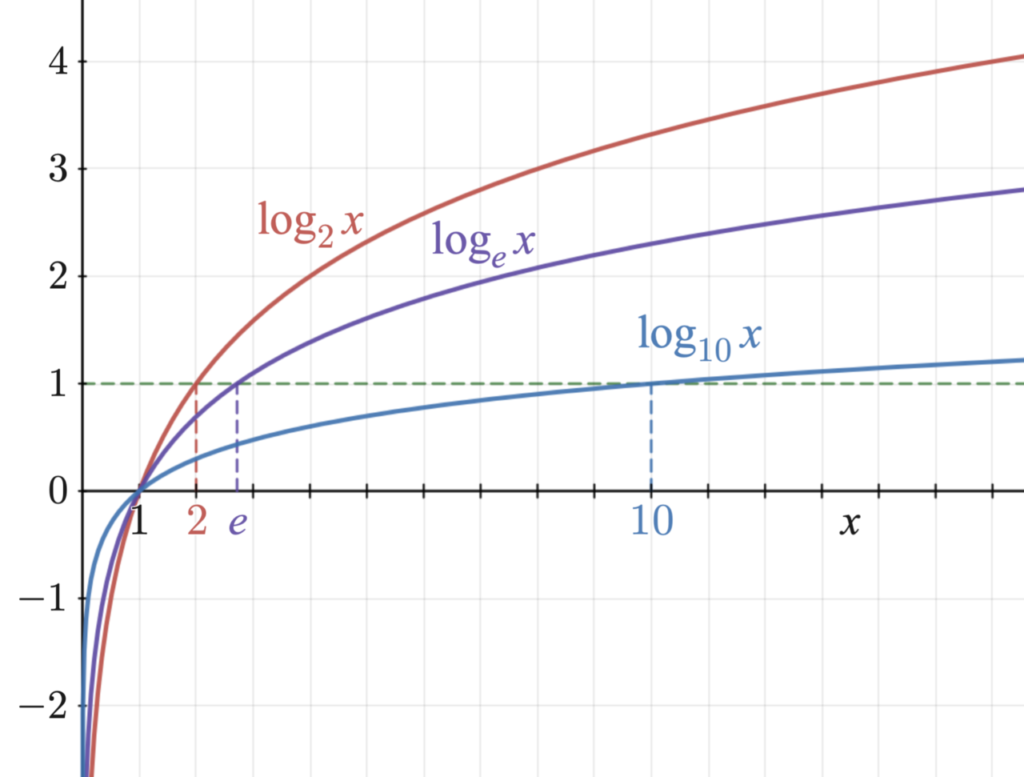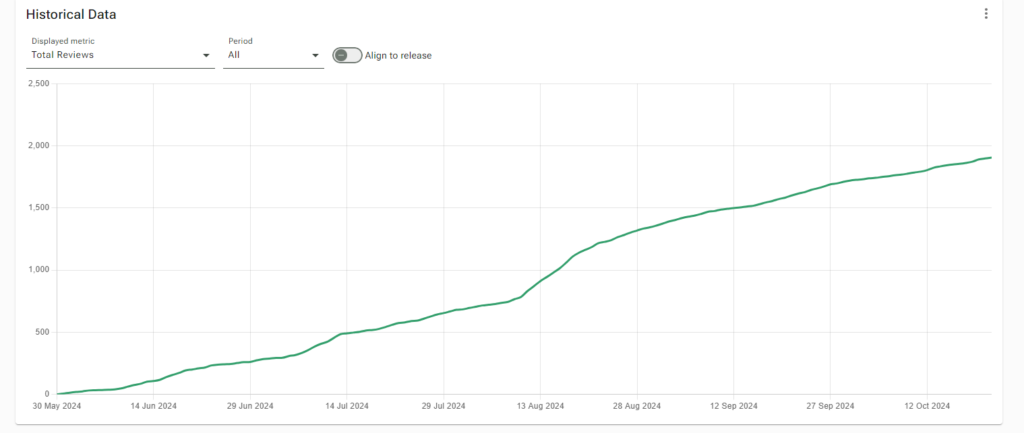At the start of 2024 I decided that every Quarter I would check in to see what games are doing well, how many games are releasing, and what it says about finding success on Steam.
I also take a moment to single out games that have earned more than 1000 reviews. Why 1000? A game with 1000 reviews indicates that it is doing something right and that there is a hungry audience for it.
Why 1000 reviews as my marker for success? You cannot “game” your way to 1000 reviews with one weird trick or one hidden hashtag on Twitter or because you figured out that secretly the best time to post on Reddit is actually 11:39PM on a Tuesday. You can’t buy bots to get 1000 reviews. Going viral on TikTok isn’t sufficient to get 1000 reviews. There is no one influencer that can push a game up that high. A 1000+ reviewed game has to have something special about it.
I do this so that I can see what the Steam audience is actually interested in. What do they want?!?
The data set
I use VGinsights to gather data about game releases and how many reviews games earned.
These are games that meet the following conditions:
- Indie or AA games as classified by VGInsights on their about page
- Launched in 2024
- Achieved 1000 or more reviews across all languages. If you look up some of these games on Steam, you might see that they have fewer than 1000. That is because Steam filters the number of reviews to your language. VGInsights counts all reviews in all languages and that is what I use in my count.
- I removed games that are Chinese, Japanese, or Russian only because I am trying to find game design trends that work across cultures. I don’t know those cultures well enough to assess whether those games could have broader appeal outside of their territory.
- I removed games with big IP. For instance VGinsights classifies SNK CORPORATION as a AA publisher but they released Metal Slug Attack Reloaded to 1000+ reviews. I think the legacy of the Metal Slug IP is doing the heavy lifting and doesn’t have many lessons we indies can learn about which genres are hot.
- I include free and paid games in my sample. It is very hard to get a free game up to 1000 reviews (only 4.5% of them reached this). So it is interesting to look at what type of free games are succeeding.
- Q3 refers to games released between July 1st and September 30th.
- I sampled the data on October 1st. So I know there are games that released in Q1 and Q2 that have since reached 1000 reviews after my Oct 1 sampling. I will pick them up again when I do the Q4 and year in review round up. So if you also do a 2024 1000+ review sampling you will find more games than I did in 2024
Are there too many games?
I guess?
But can you have too many kisses? Too much chocolate? Too many sweet moments with your child before they grow up and go to college? Games are fun. People like games. So I guess this is a good thing for the fans.
The too many games argument always seemed toxically Malthusian to me. Like who made too many games? Who should stop making games? Are you going to stop making games? So why should somebody else stop? Are you going to tell some kid with hearts in her eyes that she should stop making games? You tell her, not me.
As of Oct 1, I found 348 total games that earned 1000 reviews. About 267 games are the indie games without IP supporting them. I don’t know if that is a good trend or not yet because the year is not over and there are still some major sales like the Winter Sale which will push many games over 1000 reviews.
In 2023 there were 415 indie games that were able to get to 1000 reviews by the end of the year. So I am curious if similarly there will be 400-ish games in 2024. With 3 months left in the year 148 games must release or older games must pass the 1000 review threshold. We will seeee.
Here are the number of total games (all release types Indie all the way up to AAA).

So far in 2024 13,065 games have already been released. That is just 870 games short of the TOTAL released in 2023 and we still have 3 months to go.
Based on the latest trends, I estimate that 17,965 will be released by the end of 2024. That is a 28.92% increase over 2023.
Is that increase because of the AI flood of garbage?
Almost 50% of games released so far in 2024 have not earned 10 reviews.
Almost 80% of all games released in 2024 have earned fewer than 50 reviews.
If you assume the boxleiter method that means that 80% of games have sold fewer than 1,500 copies.

I have been tracking how many games are at each review level. Here is how 2023 and 2024 compare (so far). Seems shockingly similar.
At the end of the year I will do a deeper dive on all games since 2019.

It just seems like there are more games at every level. There are 30% more games, but their relative success seems the same as last year.
And although there are some capsules that look AI generated, I haven’t seen any games that look like a majority of the art is AI.
Here is my theory: AI is not ready to make art for games. When you make 2D art for games you need a lot of it because you need characters doing lots of actions, wearing variations of armor, and holding different swords, and potions, and magical keys, and in lots of different poses and under different conditions.
AI art is notoriously fickle. You ask for one drawing, then use the same prompt again and it looks quite different.
Game art needs consistency and AI doesn’t seem anywhere near doing that.
So although Valve allowed games made using AI art, I don’t think it is the reason for the increased number of games.
The idle food trend
The idle game Banana released in April and went viral because of some dodgy tradable goods (here is a pretty good explanation)

Many people feared that quickly produced games with various foods would clog the store choking off “real games” from getting visibility.
But that largely hasn’t happened. There are a few simplistic food-based idle games but they really haven’t gone far.
I searched various foods and found most of them went nowhere
- Apple (84 reviews)
- Orange (not released but it has only 60 wishlists)
- Pear (not released but only 20 wishlists)
- Watermelon (47 reviews)
- Cheese (1 review)
Here are three others that have earned at least 1000 reviews. But with each one the review counts and player base gets smaller and smaller
Egg (9407 reviews) [This actually released before banana]

Burger (1149 reviews) [Released May 2024]

Banana & Cucumber (1707 reviews) [Released June 2024]

So, don’t freak out. Everything is going to be fine. The trend of simple food-based-clickers is largely over. It was one weird blip, not a trend.
Late bloomers
Late bloomers are games that were released in Q1 and Q2 but did not hit 1000 reviews in that quarter. Instead they grew more slowly. In the Q3 sample, I found 36 games fit this “late bloomer” condition.
Why do I find this interesting? For the most part, your first month of sales is your destiny. Steam does a very good job of showing your game to a representative audience in that first month and if your game performs well, they amplify it using the various Steam store widgets. I know everyone says “YA but what about Among Us?!? They emerged from poor initial sales to become a mega hit.”
Unfortunately very very very few games come back from lackluster sales in their first month like Among Us did. So I like to find them. In my current sample only 36 games have reached 1000 reviews outside of their initial launch window.
There are two basic ways this happens and neither of them were “this game sold poorly for months and then one magic day took off.”
Reason #1: The first is it just barely missed my sampling window.
Autopsy Simulator is one such game. It released June 6th, but my last sample was on July 1st. It missed the cutoff by just 170 reviews.

Here is the review chart:

Reasons the game did well:
- It’s in a good genre: Horror + Simulation.
- It was well marketed with an estimated 260,000 wishlists at launch
Reason #2: Slow grower
Most games review counts look like the classic Logarithm curve

Huge spike at the start then slow growth over time. But sometimes, games have a slow consistent linear growth up to and past 1000 reviews.
This is rare but Pilgrim is one such example. It is an early access co-op horror game that launched in May of 2024. Pilgrim’s review count for the first month was just 274. I typically see games stall out at this point and never make it to 1000. But as you can see from the following graph it eventually hit 1000 4 months after launch.

But the developers have been doing a good job of hitting every sales opportunity every 30 days.

They have also been doing a good job of patching the game multiple times a month. In fact they patched it 6 times in the first week.
So why the steady growth pattern?
- A well made game in a good genre (co-op horror).
- Good theme. One reviewer called it “Medieval Lethal Company.” – I have often said that one of the best bets is to take a hit game and change the setting. Sadly being too innovative is risky! It is much easier to just change one factor.
- Not following the current meta where you build up wishlists over months and then releasing with a big bang. The game launched with only 500-ish wishlists and only 2 weeks of marketing a coming soon page. Therefore sales started lower and they are now playing catch up.
- Regular sales as frequently as allowed.
- Frequent patches.

So I hate to be a buzz kill, but if you built up a ton of wishlists, but launched poorly, there is almost no evidence that the game will turn it around later.
And if you didn’t market your game and launched with sub 1000 wishlists, and your monthly sales are not increasing, evidence also says the game won’t be a breakout success.
The Among Us scenario just doesn’t happen.